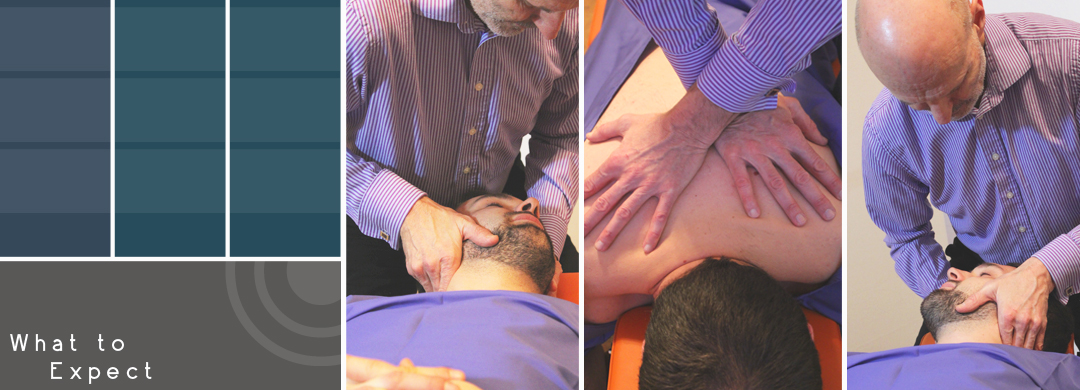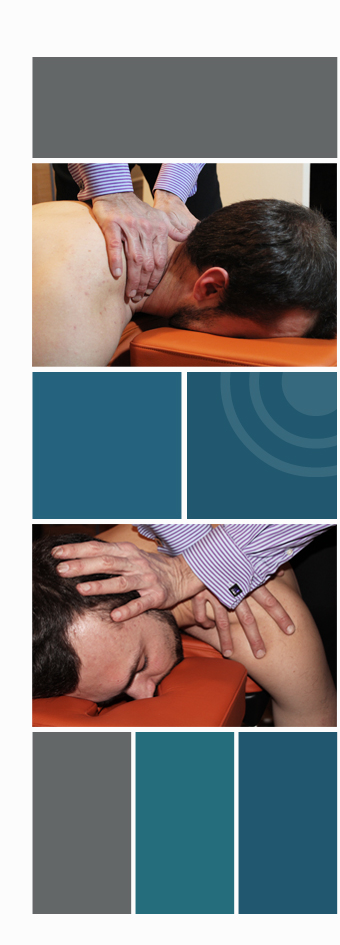

I will normally book an hour for your first consultation and when you arrive you will first of all be asked to fill out a sheet with information about yourself and the reason for your visit.
Most people that I see suffer with pain somewhere near the spine or peripheral joints.
I will then proceed to take a case history by asking you more detailed questions about your complaint, your general health, and your medical history. Following the taking of the case history I will normally need to examine you in order to establish the nature of your complaint, its exact location and its severity. These first stages can be summarized as follows:
Case History – This is where I find out as much information as possible about the complaint that you have come to see me about. At this stage I will need to make a note of any other relevant medical history, if you are taking any medication etc. This part of the consultation needs to be thorough and may take some time.
Examination – In the majority of cases I will then need to conduct an examination. This will consist of orthopaedic, neurologic, and chiropractic tests including for example looking at your posture, how your complaint is affecting the way you are able to move certain parts of your body and reflexes. The results of the examination should provide further information about your complaint and will assist me in determining the reason for your complaint, the working diagnosis.
At this stage I should be able to determine whether or not it is necessary to carry out further investigations such as x-ray, a scan, or other tests.

Diagnosis
The next step is for me to on the basis of the case history and the results of the examination try to establish the cause of your symptoms; the working diagnosis. That is, the underlying cause of your complaint and/or the reason that you are suffering with for example pain. At this stage I should be able to determine whether or not I am able to treat your complaint/condition with the care that I can provide as a chiropractor.
Plan of Management
If your condition falls into the category of complaints that I am able to treat with the care that I can provide as a chiropractor I then decide what in my opinion would be the most appropriate treatment and how it shall best be applied.
Report of Findings
At this stage I will go through my findings with you, and the best way forward. This may be treatment that I would recommend or it could involve referral to another healthcare practitioner that is more suited to treat your condition.
If I am able to suggest a treatment plan we will go through together what the treatment will be expected to accomplish, if there are any risks involved, and the long-term prognosis. I will of course endeavor to answer any questions that you might have at this stage.

Treatment
After discussing the working diagnosis and my suggested treatment plan we have reached the point where, if you have provided consent for treatment, treatment can commence. Unless there are further investigations that need to be carried out before I can establish the working diagnosis I will normally be able to start treatment on your first visit.
The care provided by chiropractors for musculoskeletal conditions has been shown to be very effective when applied in the correct way. Some conditions require only a few treatments to improve while other conditions take longer to treat, and different individuals respond differently. A condition that you have had for several months or even years will generally take longer to treat than a condition that you’ve only had for a few weeks although this is not always the case.
As a chiropractor I will monitor progress at every appointment in order to make sure that the treatment plan is having the desired effect and so that treatment can be modified in relation to how you respond.
Follow up and Preventive care
If we have agreed to do so I will continue treating until we reach a level of improvement that you are satisfied with. Depending on your condition, your age, general health and life style, and your occupation I may at this stage suggest supportive treatment in the form of planned treatment visits scheduled after several months. My clinical experience and research indicate that supportive treatment and the monitoring and advice that forms part of it maintains your musculoskeletal function and it may also prevent relapse.

